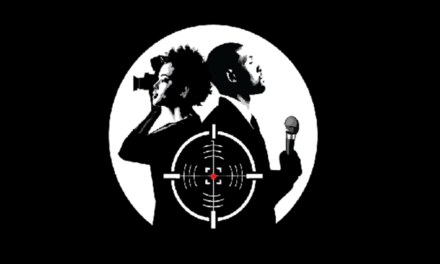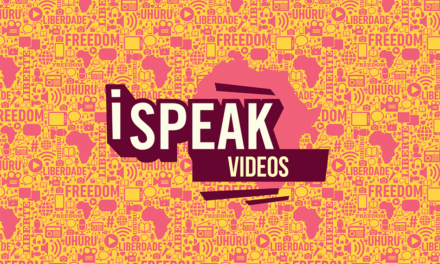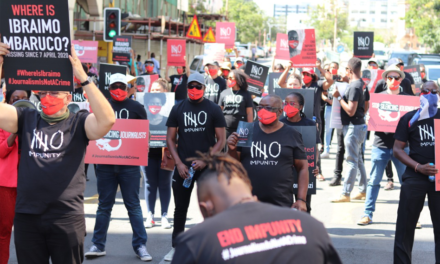
Sexual harassment – the culture of abuse continues unabated

Sexual harassment is part of a media woman’s lived experience, both in the newsroom and out in the field. That harassment comes in an array of forms and from multiple individuals – supervisors, subordinates, colleagues, peers and sources. This is exactly why gender and sexual harassment policies in the media were crafted – the intention is to make newsrooms safer for women. The advent of the internet and social media platforms may have facilitated women’s voice and agency, but it has unfortunately also presented an additional avenue through which women journalists are harassed online.
Years of lobbying has brought about greater awareness on understanding sexual harassment, so Victor Mabutho asks the critical question: has there been a change of behaviour as a consequence?
In 2021, the first ever comprehensive survey on the extent of sexual harassment in Africa’s media sector, released by Women in News – Sexual Harassment of Women in African Media , pointed to a disturbing reality that the culture of abuse continues unabated, as one in every two women in the media experiences some form of sexual harassment.
Although only eight (8) countries took part in the survey, which is just 14% of countries in Africa, it provides a detailed statistical starting point on continental and regional trends on sexual harassment.
According to the WAN-IFRA survey, just over half of the media outlets surveyed have sexual harassment policies and procedures. However, according to the respondents from these media houses, only 17% knew the contents of their respective policies. So, it should not be surprising that women continue being harassed in media organisations, which have ticked off the checklist citing gender policies as having taken steps to deal with sexual harassment.
Chipo, (not her real name) a journalist working at an established media house with a sexual harassment policy, says she only knew of such a policy after a disturbing incident took place. “I wasn’t aware that there was a procedure to file for harassment, until a colleague reported to management that she had been inappropriately touched by a senior reporter. He was found guilty of harassing my friend, but only given a warning. Disappointed by the ruling she resigned.”
The lack of meaningful action taken against the perpetrator is one of the reasons women are reluctant to report incidents, or they choose to remain silent. As the WIN survey notes: “On average, only 30% of cases were reported to the participant’s respective media news organisation. Of those reported cases, news organisations took action 42% of the time.”
In most instances women decide to remain silent because they fear victimisation – there is a high risk of losing one’s job or being looked over for a promotion. The only recourse that is independent and outside the control of the media outlet is expensive, protracted and isolating – the legal route is an option out of reach for many women trying to fight a well-resourced and protective ‘boys club’ that immediately resorts to closing ranks.
There are also personal risks to relationships and as Abigail Gamanya, the national director of Gender Media Connect, Zimbabwe explains: “These women find themselves between a rock and a hard place. Imagine having to report such an incident and facing the possibility of their husband or partner finding out. So reporting the incident doesn’t only create problems at work, but it is unlikely there will be any support at home either. Often the partners use such incidents to put a stop to their wives or girlfriends going to work. So in choosing to keep the relationship with their partners intact, women journalists end up suffering in silence.”
Survivors share their experiences:
- The challenge with reporting harassment in the newsroom as a woman is that the entire chain of command are men, and there are no clear structures on how to go about making such a complaint
- I lost interest in the media industry because any time I did not show interest to my editor, it was always a rough day for me. My stay there was hell.
- When my only female colleague left for another media house last October, my editor told me to be assured of her position; I needed to warm his bed. I quit after being harassed for ‘running to HR’. I felt so helpless and had no one to go to and ended up being demoted. I am still affected five years later.
“The most common responses of organisations when they took action was warning the perpetrator (41%), offering emotional support for the participant (12.7%), dismissing the case after review (12.5%), and providing training for staff about sexual harassment (9%).”
According to the report, harassment from sources amounts to 17%, posing another hurdle for women interviewing subjects who are critical in providing content and substance to a story being worked. Their demands in exchange for the information they have is a negotiation that not all women journalists are able to do or should have to. When recalling her own experience Chipo advises: “When it comes to dealing with sources, you have to balance between getting the story, while making it clear you are not interested in his advances.”
It doesn’t always work out well and “as a woman journalist you actually lose stories because you’ve said no to someone’s sexual advances. But that doesn’t happen to our male counterparts. It’s difficult for a woman to cover political stories, because sources want favours in exchange for information,” adds Chipo.
While the WIN survey is one of the most comprehensive surveys on sexual harassment in the media, it solely focused on media outlets.
What also needs to be evaluated is the equally worrying rise in attacks on women on online platforms as they are more insidious: people often feel it’s acceptable to say things online that one would normally not say in person. Online attacks are out in the public domain and so they reach a larger audience, and with trends continuing there are audiences who will normalise these attacks. More distressing is that this perpetrator is able to hide behind the anonymity of online platforms.
A new global survey conducted by the International Center for Journalists (ICFJ) and the United Nations Educational, Scientific and Cultural Organization (UNESCO) points out: “Online violence targeting women journalists manifests itself in a variety of ways, but it has a number of common characteristics:
- It is networked
Online violence is often organised, coordinated or orchestrated. It can include state-sponsored ‘sock puppet networks,’ acts of ‘patriotic trolling,’ and involve mobs who seed hate campaigns within one fringe network before pushing it into more mainstream networks and partisan media. But such abuse can also come from individuals united in a common cause – like misogyny. - It is usually misogynistic
Misogyny is one of the key features of online violence targeting women journalists, and it has been routinised. - It radiates
The perpetrators of online violence against women journalists often target their families, sources, colleagues and bystanders too. - It is intimate
In detail and delivery, the threats are personal. They arrive on mobile phone screens first thing in the morning and last thing at night, and they are often highly sexualised.
Giving her evaluation of cyber laws and policy on the continent, digital rights researcher Juliet Nanfuka says: “Right now we do not have any dedicated policy for the dynamics that women face in online spaces. What we have, are other policies that look at internet users as a whole, none that understand the unique online experiences women and young girls face, in particular, on online spaces.”
Sharing her thoughts on the legal and policy frameworks, constitutional lawyer Jessie Fungayi Majome feels: “The patchwork of legislation and policies pertaining to sexual harassment is disjointed, as it is to be found in bits and pieces of law such as in the codes of conduct in the employment sectors, in codes of conduct which is worded rather vaguely, and not comprehensively. “Sometimes we find it in criminal law codification around just general harassment. In my view there is need for a legal framework that is very clear and very easy to use for survivors to get help immediately and bring perpetrators to book”.
Nanfuka explains the role of platforms in fighting harassment. “Platforms have a role to play in how ready they are to address cyber harassment. We see a whole lot of abuse going under the radar because it’s from the (African) continent and in local languages, so harassment is not picked up by the social media platforms not conversant with culture and context. In other cases we have the use of images and text, where the image may appear innocent but the text accompanying it portrays a different and more nuanced meaning.”
“No one stakeholder, in the internet governance arena, has the power to address this issue alone. It has to be approached by all actors in the model collectively,” she adds. Therefore, the remedies for combating online violence require a multi-stakeholder approach, involving governments, social media platforms, media and civic groups.










